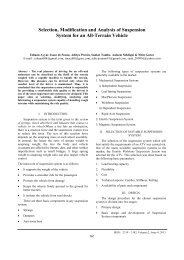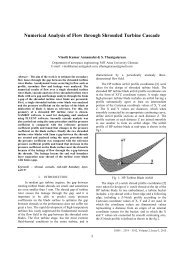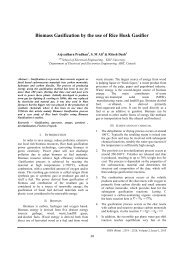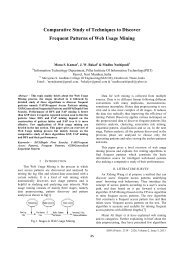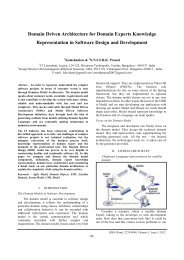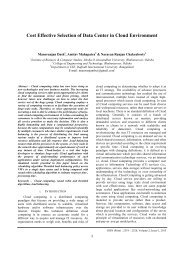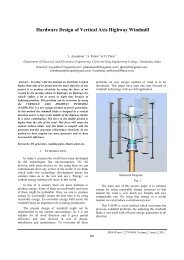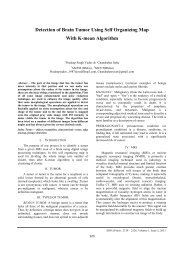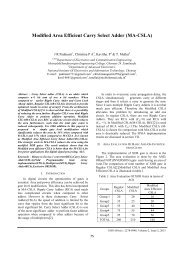Transient Stability Analysis Using MATLAB Simulink and ... - IRD India
Transient Stability Analysis Using MATLAB Simulink and ... - IRD India
Transient Stability Analysis Using MATLAB Simulink and ... - IRD India
You also want an ePaper? Increase the reach of your titles
YUMPU automatically turns print PDFs into web optimized ePapers that Google loves.
International Journal on Advanced Computer Theory <strong>and</strong> Engineering (IJACTE)In fig 3 torque angle response of the single machinesystem with various fault clearing time is shown. Thecritical clearing time of the system is 0.38sec., line 1 iswith fault clearing time of 0.49sec., this is the conditionfor sustained fault, means our system is suffering fromfault, the next line 2 is with fault clearing time of0.3sec., in response our system is out of the fault but dueto large fault clearing time it have more transients, thenext line 3 is with fault clearing time 0.2sec,Fig. 1 : <strong>Simulink</strong> model of single machine infinite bus systemWe can change from one condition to other condition byusing switch, <strong>and</strong> by varying the clock we can changethe fault clearing time of the system. As early we clearthe fault of the system the chances of attaining transientstability is more of the system. For stable operation ofthe system our torque angle should remain with limit..Fig. 2 : Angle v/s time relationship during post fault conditionFig 2 is when fault is cleared into the system <strong>and</strong>transients remain within the system after the clearing ofthe fault. If the fault clearing time is reduced of thesystem then our system would remain in stable state. Ifthe fault is cleared after critical clearing time them oursystem would no longer operate in stable state.in this response our torque angle is also above therequired limit, the next line 4 is with fault clearing timeof 0.1sec, this is the response where transients are verylow <strong>and</strong> our torque angle is within required limit.TABLE I output with fault clearing time of 0.10 sec.Accelerating power(Pa)angle0.288 21.640.539 24.210.439 31.59-4.46 37.65-0.63 38.92-0.66 38.64-0.56 36.40-0.327 29.850.04 22.440.435 16.250.50 13.10III. INTRODUCING DAMPING INTO THE SYSTEMBy introducing Damping into the system we canremove all the transients that are presented into thesystem after removing the fault of the system. Dampingcan be introduced into the system by providing anegative gain of very low value less than 1. Thisnegative feedback gain remove all the transients whichare present in the system.Fig 3 angle v/s time response of different fault clearing timeFig 4 Single machine infinite bus system with dampingISSN (PRINT) : 2320 – 8945, Volume -1, Issue -6, 2013134



